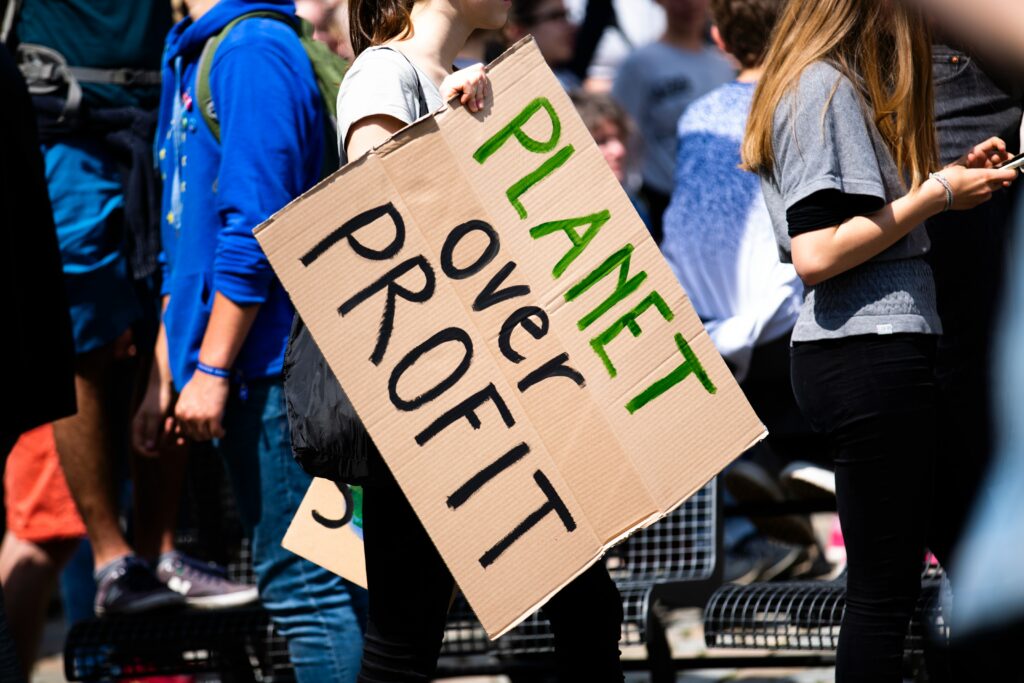Corporate social responsibility
Corporate social responsibility (CSR)
In this theoretical section, we start by explaining what CSR is. Then we focus on its evolution and, finally, on the way CSR is communicated.

What is CSR?
There are many definitions of corporate social responsibility (CSR), but broadly speaking CSR can be defined as the commitment of corporations to behave ethically and to look after the environment, their own employees, and the broader society. In addition to addressing societal and environmental concerns, companies that engage with CSR are reaping the economic benefits of their commitment.
Watch the short video (03:28) or read the theory below to find out more about CSR and its implications.
What is CSR? (watch the video)
What is CSR? (read the theory)
Broadly speaking, CSR is the commitment of corporations to behave ethically and to take care of their employees, the larger communities, and the environment. In order to be socially responsible, companies should make social, environmental, ethical, human rights, and consumer concerns a part of their core business operations.
With regard to the environment, companies can take several actions to ensure that their conduct is ethical and responsible. For instance, they can plant a tree for each product sold, cut down on plastic use, or invest in renewable energy.
As far as communities are concerned, socially responsible companies often provide training opportunities for young people. They can also invest in cultural events or share resources to tackle diseases, as we have seen during the COVID-19 pandemic.
In the workplace too, socially responsible companies can take various initiatives, such as encouraging diversity or offering their employees opportunities for career growth and development.
Up until recent years, companies have regarded sustainability and social progress as obstacles to profitability, and they have tried to find a balance between CSR engagement and economic success. However, currently there is a growing awareness among companies that profitability and societal needs go hand in hand, and that they can be brought together in order to create shared value. This awareness comes from the observation that it is not just economic needs that define the markets, but also societal and environmental needs.
For companies, creating shared value involves reconciling these needs. For instance, when a company invests in a wellness programme, it reduces absenteeism and improves productivity. Another example: companies need healthy and stable communities in order to create a demand for their products. On the other hand, societal and environmental issues can result in costs and losses for companies.
Recommended reading:
- For real-life examples of CSR initiatives in businesses, read “What is corporate social responsibility?” in the Business News Daily (26 June, 2020)
- “The actions of companies have significant impacts on the lives of citizens in the EU and around the world” (European Commission, 2011). Read about why the European Commission believes that corporate social responsibility and responsible business conduct are important.

How has CSR evolved?
The belief that businesses have a responsibility towards society is not new, but in the past few decades several events have shaped the concept of CSR and have highlighted its importance.
Watch the short video (03:29) or read the theory below to learn more.
How has CSR evolved? (watch the video)
How has CSR evolved? (read the theory)
The belief that companies have a responsibility towards society has been around for a long time but, up until the 1950’s, it mainly referred to philanthropic activities. In this decade, however, large companies began to consider the societal impact of their decisions.
In the years that followed, several events pushed the CSR agenda forward. For instance, in 1969, a major oil spill in the Santa Barbara Channel, California, sparked massive protests against the pollution caused by corporations.
Unsurprisingly, the concept of corporate social responsibility became increasingly popular and widespread, so much so that it became difficult to clearly define it.
New governmental bodies were established, such as the Equal Employment Opportunity Commission and the Consumer Product Safety Commission.
In the 90’s, globalization meant that multinationals were dealing with business environments where labour rights and consumers’ rights were often unregulated.
In order to insert universal values into the markets, the United Nations Global Compact was launched. Its goal was to help companies adopt universal principles on environment, human rights, and working conditions, among others.
The European Commission also organised campaigns and initiatives to promote CSR among businesses. Examples of this commitment are the 2005 European Roadmap for Businesses – Towards a Competitive and Sustainable Enterprise, and the Enterprise 2020 Manifesto, in which the European Commission focuses on companies’ societal impact, environmental impact, and employee engagement.
The growing world population and the changing lifestyle have led to an unsustainable use of limited resources (e.g. free lands) and to the mismanagement of renewable resources, such as water. Therefore, the pressure on companies to step up and to reconcile societal and environmental needs with economic needs is increasing.
Several companies have begun engaging with the so-called “circular economy”, which involves finding innovative ways to reduce, reuse, and recycle products and resources. For example, the Australian company “Close the Loop” is using old printer cartridges and soft plastics to produce a higher-quality road surface.
Recommended reading:
- “CSR” has become a buzzword, but the ideas behind it have existed for quite some time, as explained in “A brief history of corporate social responsibility (CSR)” (Thomas, 25 September 2019)
- Definying and putting into practice CSR can be a difficult task for companies. The United Nations Global Compact have set forth ten principles to guide businesses.

How is CSR communicated?
The interest in CSR has been growing among various stakeholders (e.g. customers, investors, the media, and so on). The way in which companies communicate their socially responsible activities can influence their relationships with stakeholders. In order for their communications to be effective, companies should consider that different stakeholders may prefer different communication channels.
Watch the short video (02:16) or read the theory below to find out more.
How is CSR communicated? (watch the video)
How is CSR communicated? (read the theory)
Interest in CSR activities has been increasing in the past few years. A variety of stakeholders such as investors, customers, the media, and non-governmental organisations seek information about how committed companies are to social responsibility. For instance, customers want to know how companies treat suppliers or how much emissions and waste they produce.
CSR communication should be both comprehensible and honest since this type of information is not without consequences. Companies that appear to be transparent and to engage with CSR activities generate more trust in stakeholders. Customers, for example, are more loyal to these companies.
Companies have multiple channels at their disposal to communicate about their CSR activities. They can use full reports, social media accounts, their websites, or product packaging. Reports tend to be long and contain detailed information that is of interest to a variety of stakeholders. For example, investors rely on this detailed information before making investment decisions. Customers, on the other hand, tend to prefer CSR information in a summarised format, as found for instance on corporate websites and social media accounts.
Recommended reading:
- Using videos, images, attractive language and design, companies are harnessing the many possibilities offered by their websites in order to communicate with customers about their CSR activities. To learn more, check out the websites of Tony’s Chocolonely, Patagonia, or Too Good To Go, to name a few!
- Reports on CSR mainly address investors. They tend to be longer, not as visually engaging, and they contain detailed and specialised information.
*The use of examples from companies does not represent endorsement.

This sub-section concludes the theory on corporate social responsibility. We hope that you have learnt something new and that you have found it interesting! Please move on to the exercises and to the case study.
